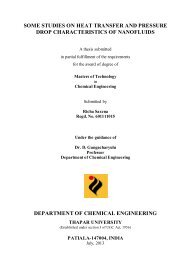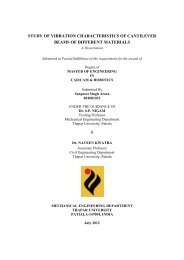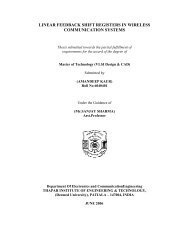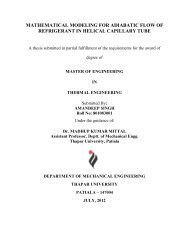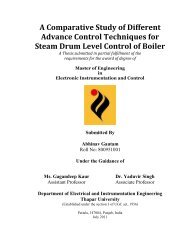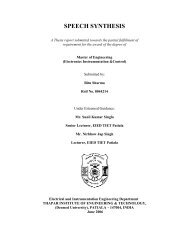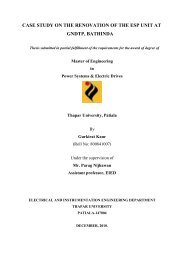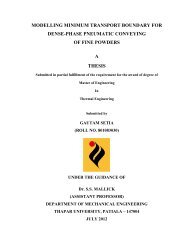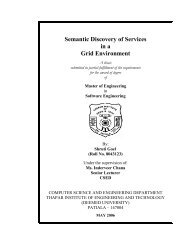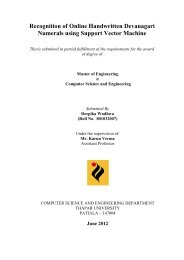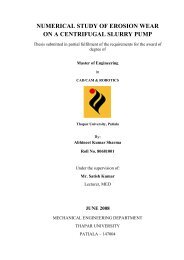from indigenous fermented foods and human gut ... - Thapar University
from indigenous fermented foods and human gut ... - Thapar University
from indigenous fermented foods and human gut ... - Thapar University
You also want an ePaper? Increase the reach of your titles
YUMPU automatically turns print PDFs into web optimized ePapers that Google loves.
4<br />
Chapter I: Introduction<br />
Gram-positive, facultatively anaerobic, catalase-negative, facultatively heterofermentavie,<br />
non-spore-forming rods <strong>and</strong> are isolated <strong>from</strong> many habitats (e.g., meats, milks, dairy<br />
products, sour dough, silage, <strong>and</strong> sewage). Strains of Lactobacillus are important for many<br />
food fermentations <strong>and</strong> are normal constituents of intestinal microflora. Some Lactobacillus<br />
strains have desirable <strong>and</strong> functional characteristics (Saxelin et al., 1996). The Lactobacillus<br />
casei group contains a number of well-known probiotics strains including L. casei shirota<br />
(Sugita <strong>and</strong> Togawa, 1994) <strong>and</strong> L. rhamnosus GG (Saxelin, 1997).<br />
For both basic studies <strong>and</strong> applications in food industries, the identification of<br />
Lactobacillus strains within this group (L. casei, L. paracasei, L. rhamnosus <strong>and</strong> L. zeae) is<br />
very important. Most of these strains grow under similar environmental conditions <strong>and</strong> have<br />
very similar physiological properties <strong>and</strong> nutritional requirements because of which the<br />
traditional phenotypic tests for Lactobacillus identification can be difficult to interpret. These<br />
methods give ambiguous results <strong>and</strong> are also time consuming (Charteris et al., 1997;<br />
Hammes et al., 1992).<br />
Although, this group of Lactobacillus can be readily distinguished <strong>from</strong> other<br />
members of the Lactobacillus genus by fermentation profiles (Hammes et al., 1992), but it is<br />
not possible to unequivocally distinguish above mentioned four species on the basis of<br />
fermentation patterns. They form a closely related taxonomic group. In recent years, the<br />
taxonomy of this group has changed considerably with increasing knowledge of genomic<br />
structure <strong>and</strong> phylogenic relationships between Lactobacillus species (Klein et al., 1998;<br />
Tisala-Timisjarvi et al., 1999). Identification of LAB mostly depends on traditional<br />
phenotypic analyses <strong>and</strong> molecular biology-based methods (Zoetendal et al., 1998).<br />
The core LAB genera Lactobacillus, Lactococcus, Leuconostoc, Pediococcus <strong>and</strong><br />
Streptococcus share a long history of safe usage in the processing of <strong>fermented</strong> <strong>foods</strong>.



